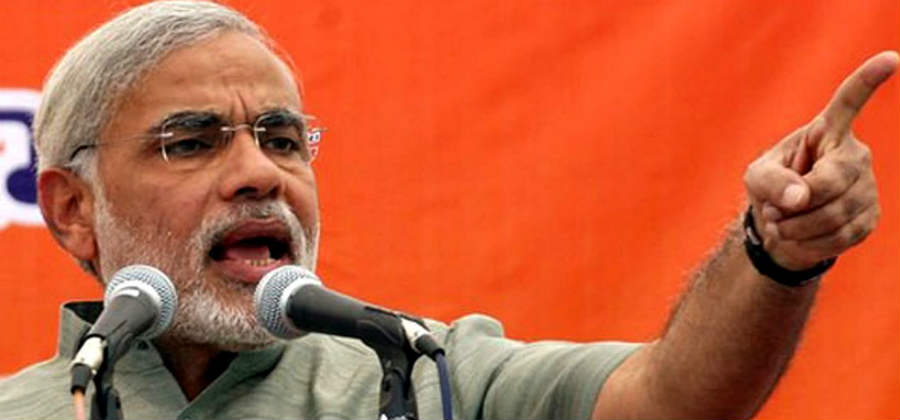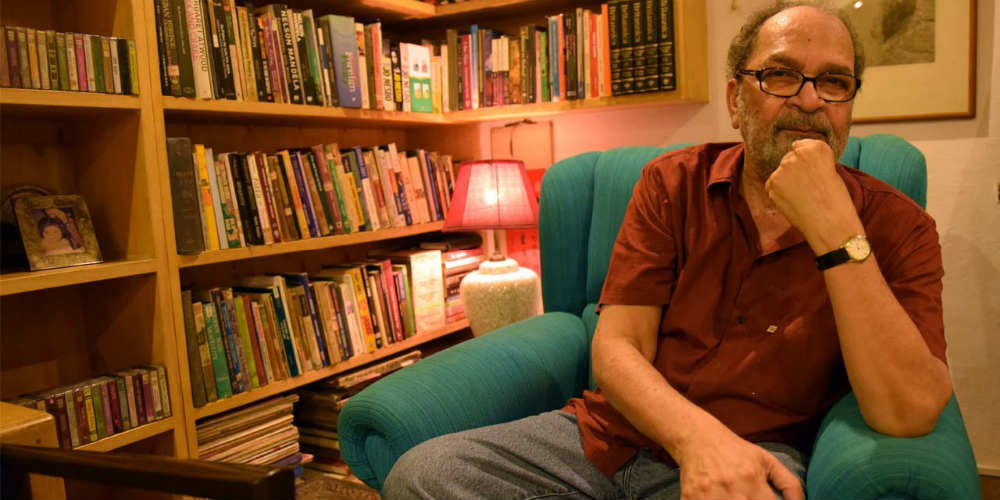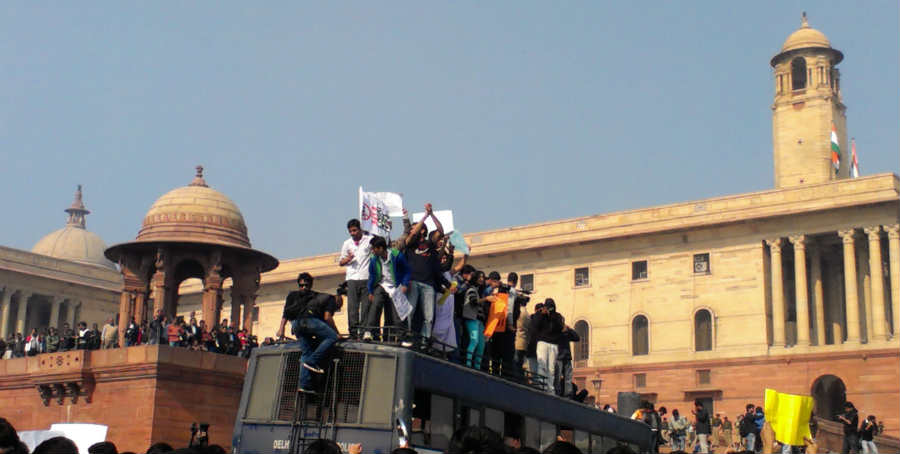BY PRAKASH NANDA
Having made lateral entry into the field of journalism, I must admit that I was not “polished” by the daily grind of hard work of reporting and sub-editing to move up in the professional ladder. Nor for that matter had I gone to a media school to learn the basics of journalism, though many years later I did become a director and head of a media school. But then, my work there was essentially administrative. The point that I want to make is that though I am a journalist by profession, I do not possess theoretical knowledge of journalism. If I am what I am, that is because of my other educational backgrounds. And yet, as a member of the news management committee of a premier Indian daily and later as an editor elsewhere, I have always believed in the importance of ethics in the media. I have had strong views, but that has never affected my editorial judgment. I have always provided opportunities for “other viewpoints”. I have always made a distinction between news and views. I have always made it a point to ask my reporters to crosscheck facts and not to twist them. I have always protected the “reliable sources”, but I have never exploited this factor to concoct stories. And I have always considered it sacred that one must not betray the sources by publishing or airing their views that they make “off the record”.
Regrettably, I am finding myself to be in a dwindling minority these days in the Delhi-based media. I want to cite in this column this time the number of stories or instances of how ethics is ceasing to be a factor in the functioning of India’s national media (TV, print and social). The media is getting increasingly partisan, its main focus shifting from pointing out facts to building perceptions. As I have always argued, the national media, the Delhi-based media to be precise, has always been more ideological than professional, overwhelmingly dominated as it has been by the “left” and so-called secular elements at the top. Naturally, therefore, the media is intrinsically hostile to the ruling Bhartiya Janata Party (assumed to be a rightist party, though actually it is not) in general and Prime Minister Narendra Modi in particular.
Just see how the national media went to the town the other day claiming that junior union minister Giriraj Singh was given such a dressing down by Modi over his controversial remark on Congress President Sonia Gandhi that the former virtually broke down into tears. Though Singh has contested the claim, just see the sequence of the story. It so happened that few days ago Singh was having some official engagements in Vaishali town in the state of Bihar. After completing his work, he checked into a local circuit house nearby to rest. He then decided to hold a press conference. After the formal press conference was over, some reporters had sat with him for a casual informal chat. “Interestingly as the conversation began, Giriraj sounded a request cum warning: ‘switch off all your cameras and other recording devices. It’s a totally informal chat, not to be quoted, not to be printed or broadcast.’ Giriraj was naïve enough to believe that his words would be taken as a command. Little did he realise that at least one of them had kept his camera running. It’s a different matter though that the minister was assured that his ‘trust would not be breached at any cost’. The minister then loosened up and committed a cardinal mistake – which was making a racist, sexist remark against Congress President Sonia Gandhi. “If Rajiv Gandhi would have married a Nigerian and Sonia Gandhi (form Italy) wasn’t white-skinned, would Congress have accepted her?”
If the above report appearing in website “Firstpost” is right then I am ashamed of today’s journalists. As journalists, we have been party to so many informal chats by ministers and political leaders. But the journalistic ethics never permitted us to “break news”. Will be it be ok if our bed-room talks (critical of Modi, Sonia, or anybody else) are revealed to the public as breaking news? I think that this is a question worth pondering over.
Secondly, at the risk of being the butt of hate mails, let me say that I agree completely with what Singh said. A black foreigner would not have been accepted by Indians as a leader, given our colour prejudice in favour of fair coloured persons. In fact, the Africans should make Singh a hero because he was speaking the bitter Indian truth in their favour. In fact, as my fried Bala Chandran, a veteran journalist, says, “If the whole of US could discuss the winnability of Obama on his colour why not us on Sonia. And here’s a bonus question: would Indira have accepted Sonia if she were Black or still trickier a Pakistani? Journalists are excluded from this quiz, for the minimum qualification is a sound common sense…Coming back to Sonia as Black, a la Giriraj Singh, I wonder whether these frauds would have so much as squeaked if Ramachandra Guha or Gopal Krishna Gandhi ( both are country’s leading “secular” and “liberal” columnists) had posed this question in an edit page piece. Or a Western writer, say Noam Chomsky? I am sure they would hold a seminar on the subject.”
Similarly, take the series of reports in recent weeks that India’s national media highlighted on the so-called attacks on Churches by Hindu fanatics in the wake Narendra Modi assuming India’s most important office. As I had argued a fortnight ago, in their display of intense animosity against Modi, many media outlets went to the town of overplaying such stories, without bothering to check out whether these unfortunate incidents were planned communal attacks or usual criminal deeds. And as it has been found out, almost all these incidents belonged to the latter category. In fact, to get a proper perspective, these criminal deeds needed to be compared with the much higher number of thefts or vandalisation of Hindu temples and Mosques. But then when these facts were revealed, they were totally underplayed. Here I must admit that as I write this, I see a leading daily at least mentioning on its front page today (April 24) that the church attack in Agra city in the state of Uttar Pradesh on April 16 (the daily had carried this story as its lead item a few days ago) has taken a “strange turn” with the arrest of a Muslim youth who has reportedly admitted that he vandalized the place of worship because his love for a Christian girl went unrequited!
Is this news planted to save “devil” Modi and the “fascist” RSS who are hell bent upon driving Christians away from India? But the Police in this case belongs to the government of Mulayam Singh Yadav, arguably “the most secular” leader of India. As far as the publication is concerned, it, as well as its sister concern, a leading television news channel, have excelled always in demonising Modi. This is the publication which had reported Modi’s much-publicised misquote of Newton’s third law, justifying the communal riots in Gujarat in 2002 – “Every action has an equal and opposite reaction.” As it was found out later by the Supreme Court-monitored Special Investigation Team (SIT), Modi, then chief minister of the state, had never said such a thing. What Modi had said was “A chain of action and reaction is going on. We want that neither should there be action, nor reaction.” But see the twist by the paper and the message it conveyed, which, seen in retrospect, added fuel to the fire.
Similarly, the same paper in 2013 had ridiculed Modi in front-paged report that Modi’s was a “Rambo Act” as he claimed to have evacuated 15000 Gujuratis in the state of Uttarakhand, where at least 1,000 people were killed and 90,000 trapped from flash floods and landslides. But then Modi had never made such a claim; the reporter concerned had filed the story on the basis of what a local BJP worker had told him! Modi became a villain for the whole media and political class for quite some time as he had “politicised a natural disaster”. Subsequently, when facts were revealed, the paper issued a clarification regretting the way the story was put up. But that was three weeks-later. By then the misleading information had triggered a large-scale national debate over Modi’s character.
For last few days, one sees the social media dominated by posts that Kerala Governor Justice P Sathasivam, a former Chief Justice of India, is being further rewarded by Modi as the next chairman of National Human Rights Commission. The government has not decided on the subject, but the anti-Modi brigade has gone hyper on the “probable” appointment of Justice Sathasivam, who again, has been misreported to be the person who as Chief justice gave bail to the BJP President Amit Shah, then accused of masterminding two Police encounters that took away the lives of two notorious criminals unlawfully. The fact remains that the bail was given by another bench involving Justice Aftab Alam and Justice Ranjana Prakash Desai. On the contrary, Justice Sathasivam was the one who shifted the trial of Shah to Mumbai from Gujarat as per the request of the Central Bureau of Investigation (CBI). But then the myth, his helping Amit Shah, that too when the Congress was ruling at the centre and Shah was a junior politician in Gujarat not dreaming of even becoming the BJP national president one day, continues to charm the anti-Modi brigade in the media.
Such instances are illustrative, not exhaustive. It is not that the national media distorts or twists stories only against Modi, though it is a fact that such twists are more centered against Modi and BJP than against others. See the way it twisted the remarks of Jammu and Kashmir Chief Minister Mufti Mohammad Sayeed, suggesting that he praised Pakistan for the recent peaceful elections in the state. Sayeed’s real sin for our media is that he, a Muslim leader hailing from the Muslim-majority Kashmir valley, leads a coalition government with the BJP.
Similarly, few days back, the story on an “imposter IAS officer” in the country’s premier training institute for civil service officers at Mussoorie dominated the headlines. Most in the media did not bother to check how the lady concerned could be an “imposter IAS officer” if she was staying in a rented room belonging to the security guard and working in the library. If she was an IAS officer, why was she searching for a permanent job in the library? Then, how was she an IAS officer if her alleged identity card as a sub divisional magistrate was issued by Uttar Pradesh Public Service Commission? No editor worth the salt bothered to find the veracity of the charge.
Of course, negative news always sells. And it is selling well against the Modi government these days. That is why it is often said that “no news is good news and good news is no news”. True, there are many issues on which one can criticise the Modi government – its failures in not filling up governmental posts, not initiating administrative reforms, not doing anything substantial in education and health sectors and so on. But then our national media has other priorities. It has built up perceptions that nothing is happening in India and that the country is literally burning along ethnic and religious fault-lines. And it has made it obvious that there can never be good news in India until and unless Modi and the BJP are thrown into the Indian Ocean.
(Prakash Nanda is Editor of Uday India, a niche monthly devoted to defence, security and diplomacy. The blog has been reproduced from the website of Uday India. The opinions expressed by the author and those providing comments are theirs alone, and do not reflect the opinions of Canary Trap or any employee thereof)


